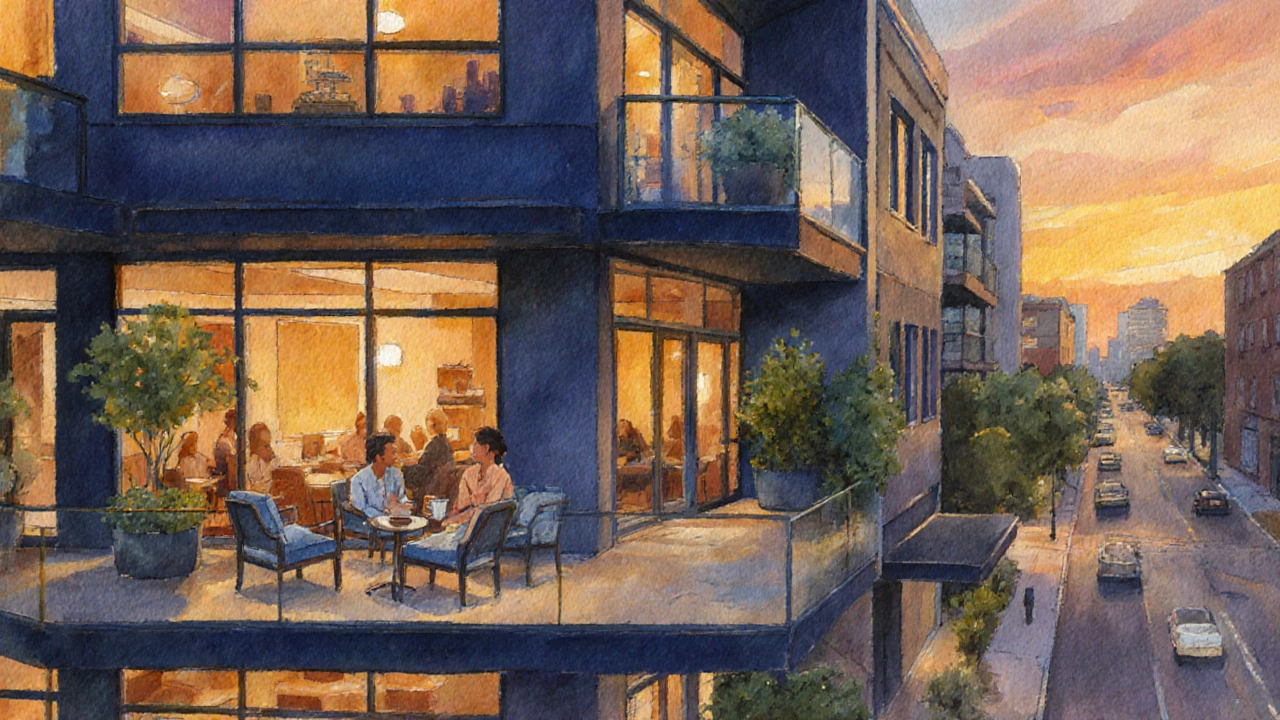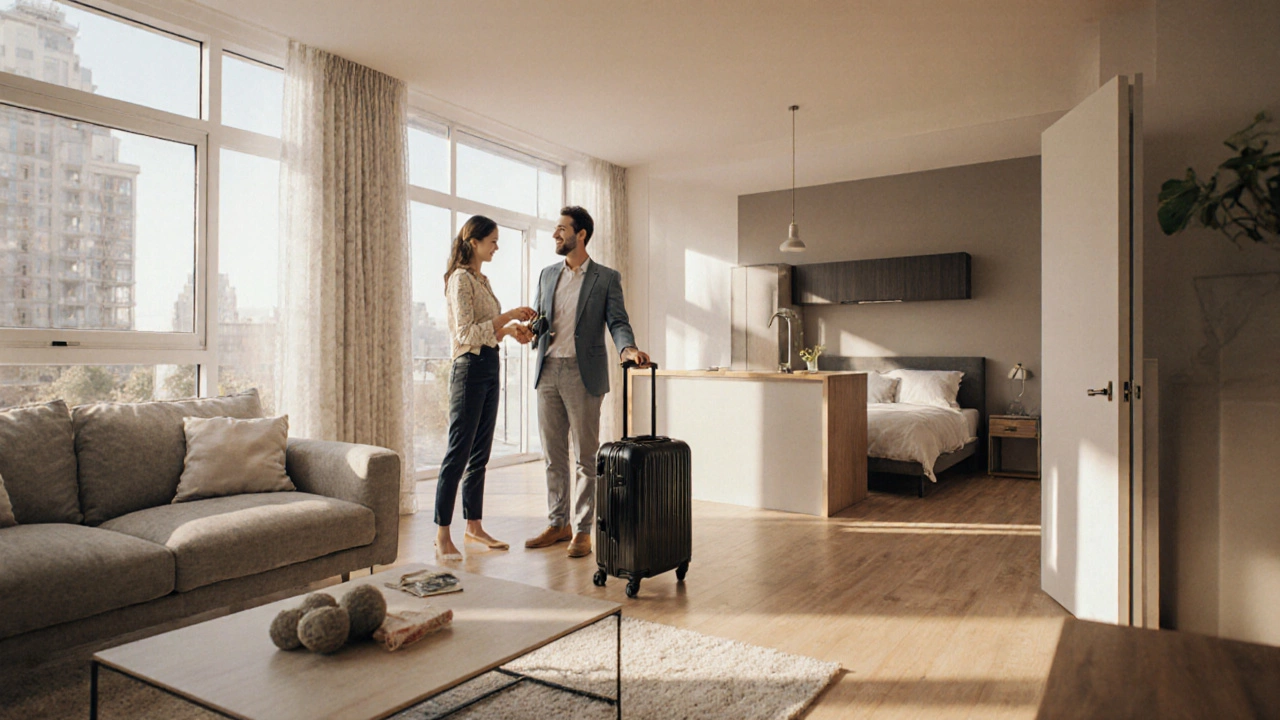Homestay Investment Calculator
Investment Summary
Key Takeaways
- Homestay can deliver 8‑12% annual homestay investment returns when occupancy exceeds 70%.
- Initial cash‑out is higher than traditional rentals because of furnishing and marketing costs.
- Regulatory compliance and seasonality are the top risks; they can be mitigated with proper licensing and dynamic pricing.
- Effective property management-either self‑managed or via a professional service-adds 10‑20% to net cash flow.
- Compare metrics like Gross Rental Yield, Net Operating Income, and ROI before committing.
What Exactly Is a Homestay Investment?
Homestay is a short‑term rental model where travelers stay in a fully furnished home that feels more like a lived‑in space than a hotel room. Unlike a conventional long‑term lease, guests book night‑by‑night, often via platforms such as Airbnb, Booking.com, or local tourism agencies. Investors buy or lease a property, equip it with essentials (bed, bathroom, wifi, kitchen), and then rent it out to tourists, business travelers, or students for stays that range from a single night to a few weeks. The core promise is higher per‑night rates compared with a typical monthly rent.
Financial Metrics You Need to Track
To decide if a homestay is worth the money, focus on these numbers:
- Occupancy Rate: Percentage of days the property is booked in a year. A healthy homestay aims for 70‑85% in popular tourist zones.
- Gross Rental Yield: (Annual Gross Revenue ÷ Property Purchase Price) × 100. Homestays typically hit 8‑12% versus 4‑6% for long‑term rentals.
- Net Operating Income (NOI): Gross revenue minus operating expenses (cleaning, utilities, platform fees, property taxes). This shows real cash flow before debt service.
- Return on Investment (ROI): (NOI ÷ Total Capital Outlay) × 100. Investors use ROI to compare homestays against other assets.
- Capital Expenditure (CapEx): One‑time costs for furniture, appliances, and any upgrades needed to meet guest expectations.
Running a quick spreadsheet with these inputs lets you see whether the numbers beat a bank deposit, a mutual fund, or a traditional rental property.

Homestay vs. Long‑Term Rental: A Side‑by‑Side Look
| Metric | Homestay (Short‑Term) | Long‑Term Rental |
|---|---|---|
| Average Nightly Rate | $120‑$250 (varies by city) | $800‑$1,500 per month |
| Typical Occupancy | 70‑85% of days | ~100% (tenant pays monthly) |
| Gross Rental Yield | 8‑12% | 4‑6% |
| Management Effort | High - guest check‑ins, cleaning, reviews | Low - single tenant, annual lease |
| Regulatory Risk | Higher - permits, zoning, tax on short stays | Lower - standard residential rules |
| Initial CapEx | $15,000‑$30,000 (furnish, décor, tech) | $5,000‑$10,000 (basic repair) |
Numbers are based on data from major platforms in 2024‑2025 for midsize cities with steady tourism. Your local market may shift a few points, but the relative gaps usually hold.
Key Risks and How to Mitigate Them
Every investment has downsides. Homestays are no exception.
- Regulatory changes: Some municipalities cap the number of nights a property can be rented short‑term, or require a special license. Mitigation: Check the city’s zoning code before buying and keep a compliance calendar.
- Seasonal demand swings: Tourist hot spots see peaks in summer and troughs in winter. Mitigation: Use dynamic pricing tools that lower rates during low season and raise them when demand spikes.
- Higher turnover costs: Cleaning, restocking toiletries, and minor repairs add up. Mitigation: Contract a reliable cleaning service with a flat fee per turnover; negotiate bulk supply discounts for consumables.
- Guest-related damage: A party can leave a mess or break furniture. Mitigation: Require a security deposit and use platform insurance; install smart locks and cameras (in common areas) to monitor activity.
- Financing challenges: Banks may charge higher interest for short‑term rental properties. Mitigation: Build a larger down payment, or consider a personal loan or line of credit with a lower rate.
Step‑by‑Step Checklist to Launch Your Homestay
- Research target market - identify cities with >2M annual visitors and a gap in mid‑range accommodation.
- Run a cash‑flow model - plug in purchase price, loan terms, expected occupancy, and nightly rate.
- Secure financing - compare mortgage offers, pay attention to short‑term rental clauses.
- Obtain required permits - contact local planning office, apply for a short‑term rental license.
- Purchase or lease property - prioritize locations near transport hubs, attractions, or business districts.
- Invest in furnishing - focus on durable, easy‑clean items; add Wi‑Fi, smart lock, and a welcome guide.
- List on platforms - create high‑quality photos, write an SEO‑friendly description, set competitive pricing.
- Set up automation - use channel managers for calendar sync, automated messages, and dynamic pricing.
- Hire cleaning & maintenance - schedule turn‑over cleaning within 2‑3hours of checkout.
- Monitor performance - track occupancy, ADR (Average Daily Rate), and guest reviews; adjust strategy quarterly.
Following this checklist reduces surprise costs and keeps your property running smoothly.

Real‑World Example: 2‑Bedroom Apartment in Austin, TX
John bought a 2‑bed, 1‑bath unit near downtown Austin for $350,000 in March 2023. He financed 70% at 4.75% interest, put down $105,000, and spent $25,000 on modern furniture and smart home devices.
- Average nightly rate (2024‑2025): $185
- Occupancy (2024): 78% (286 nights)
- Gross annual revenue: 286×$185=$52,910
- Operating expenses (cleaning, utilities, platform fees): $15,000
- Net Operating Income: $37,910
- Total cash outlay (down payment + CapEx): $130,000
- Annual ROI: ($37,910 ÷ $130,000)×100≈29%
Compared with a traditional long‑term rent of $2,100 per month (≈$25,200 annually), the homestay nets roughly 50% more cash flow. The trade‑off is the extra effort in guest communication and occasional turnover cleaning.
Is a Homestay Right for You?
If you enjoy hospitality, have time (or money for a manager), and live in a high‑traffic tourist area, the numbers can be compelling. If you prefer set‑and‑forget income, or if your city severely limits short‑term rentals, a conventional lease might make more sense. Run the spreadsheet, check local laws, and match the lifestyle demands before you jump in.
Frequently Asked Questions
What is a realistic occupancy rate for a homestay?
In most US cities with steady tourism, 70‑85% occupancy is achievable after the first 6‑12 months of positive reviews and dynamic pricing. Niche markets may see lower rates.
Do I need a special license to run a homestay?
Most municipalities require a short‑term rental permit, registration, and sometimes a lodging tax collection. Always check the city’s planning department before buying.
How much should I budget for initial furnishings?
A comfortable 2‑bedroom setup typically costs $15,000‑$30,000, covering beds, sofas, kitchen appliances, décor, and smart‑home devices. Higher‑end designs can push the number up.
Can I finance a homestay the same way as a regular rental?
Banks often view short‑term rentals as higher risk, leading to higher interest rates or larger down payments. Some lenders offer specialized mortgage products for vacation rentals.
What tools help with pricing and calendar management?
Channel managers like Hostaway, Guesty, or Lodgify sync calendars across platforms and provide dynamic pricing algorithms that adjust rates based on local events and demand.
